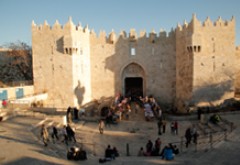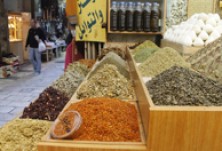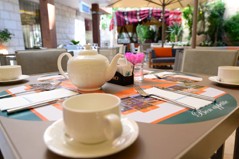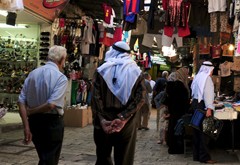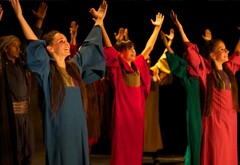The Jerusalem Nakba (Catastrophe) of 1948
As a result of the 1948 war, the Nakba divided the city into two unequal sections. The first, which came to be known as the "Arab section," namely, the East part of the city, came under Jordanian control until June 1967. The second became known as "West Jerusalem," as it fell under Israeli occupation. Arab Jerusalem formed 15% only of the total area of Jerusalem (municipal boundaries) before 1948, and East Jerusalem turned into a large city with limited area, located along the demarcation line, after losing its developed side, its modern commercial center, sources of supplying it with water and electricity, and the major part of its countryside which is its breadbasket, in addition to losing the most important institutions, such as the municipality building, post office, courts, and a large number of schools, hospitals, vocational training institutions …etc. The separation line passed alongside the western part of the city wall and parts of the northern and southern walls. Parts of the Old City were destroyed as a result of the war, the Jewish residents of the Jewish Quarter were evicted (about 2500 people), as were the resident of all Arab neighborhoods and in West Jerusalem and the surrounding villages, with their residents displaced (about 70,000 people). Large numbers of refugees flowed from West Jerusalem areas and its countryside into the Old City and East Jerusalem, despite the clear inability of the city's accommodation capacity, as was the case in other West Bank cities.
The flow of refugees into Jerusalem did not contribute to the development process, with poor refugees representing an economic weakening factor for the city. Some of them resided in the remains of the Jewish Quarter and other vacated houses, which lacked basic services, while the richer displaced residents moved from West Jerusalem to the growing city of Amman, where they contributed to its economic development. Others emigrated to the Gulf countries and Lebanon, while Jerusalem, now semi-paralyzed, was left with the poor refugees and the original residents of the Old City, whose economic and social conditions had deteriorated before the war as a result of the accumulation of the poor, and the middle class moving out to the new city, especially the western part. The truth is that the displacement process from East Jerusalem continued for the next two decades towards East Jordan, Lebanon, Europe, and the Americas, with wealthier and middle class groups leaving more than the less-fortunate groups did.
The Old City was practically paralyzed during the period 1948 - 1967, and never received sufficient attention, with the exception of some restoration work in Al-Haram Al-Sharif area. Income levels plunged and tourism deteriorated in an unprecedented manner, with Jerusalem considered a frontline confrontation city whose fate was unknown. There were also no investments made in its infrastructure, and although the United Nations Relief and Works Agency (UNRWA) provided some assistance, these did not exceed assistance provided to a disaster city.
At the same time, investments by the Hashemite Kingdom focused on the new parts of Arab Jerusalem, particularly the Salah Eddin commercial areas, up to Shaikh Jarrah, by building the Post Office, the Fire Brigade, courts, the governorate, hospitals, and schools. These rather humble investments could not save the city from crisis and marginalization, though it contained religious sites with an unmatched religious status.

